#1978
Junkyard Find: 1978 Mercedes-Benz 450SLC
The Mercedes-Benz R107/C107 is one of those cars that tends to be valued according to a binary system: a near-perfect example sells for a healthy five-figure sum, while one that’s even slightly beat is worth about as much as an ’86 Nissan Sentra with an alarming rod knock and a glovebox full of used syringes. That means that examples of Mercedes-Benz’s SL-Class machine of the 1970s and 1980s are not at all uncommon in self-service wrecking yards.
Junkyard Find: 1978 Ford Fiesta Sport
We saw a junked first-year Plymouth Horizon last week, but Chrysler’s Simca-based econobox wasn’t the only Euro-Detroito subcompact to make its North American debut in 1978. The first-gen Ford Fiesta, which had been a tremendous sales success in Europe, showed up in American Ford showrooms… where it was met by puzzled stares from car shoppers who couldn’t quite get their heads around the tiny size of the latest car to bear the blue oval.
Junkyard Find: 1978 Plymouth Horizon
Yesterday’s Junkyard Find was one of the better-known examples of the Simca-based “Omnirizon” platform, and you still see 80s Dodge Chargers here and there. What you won’t see often is today’s Junkyard Find, a first-year Plymouth Horizon. I found this one languishing in a Denver self-serve junkyard.
Junkyard Find: 1978 Datsun 510 Sedan
Wait a minute— this Malaise Era heap, with its solid rear axle and AMC Hornet-esque lines, this car can’t be a 510! That’s what I thought when I spotted this car at a Northern California self-service yard last month, having forgotten that Nissan’s American marketers slapped 510 badges on the 710/Violet/Stanza/200B for the ’78 and ’79 model years. This is the first time I’ve seen one of these things in at least 20 years.
Junkyard Find: 1978 Volkswagen Transporter
Like the Fiat 124 Sport Spider, your typical second-gen VW Transporter typically spends many years as a never-started project in a back yard or driveway (because everyone loves an air-cooled VW bus!), then washes ashore at a junkyard. I’ve been seeing these vans in about the same numbers in junkyards for a couple of decades now, even as only the nicest street-driven examples have been kept alive. Here’s a ’78 with some extremely Malaise-y custom touches that I spotted in a Colorado yard last week.
Junkyard Find: 1977 Datsun 280Z
After a couple of 1970s Italian sports cars for our last two Junkyard Finds, it’s time to look at the Japanese competition. Malaise Era Z Cars are not uncommon in California junkyards, and I spotted this fairly rough example in an Oakland yard last month.
When You See a Clean Corinthian Leather Bench Seat In the Junkyard, You Buy It!
When I saw the interior of today’s Junkyard Find, I knew: I must have that Corinthian Leather bench seat! Maybe I’ll put it in the back of my ’66 Dodge A100 van, or maybe I’ll just convert it into a comfy, Ricardo Montalban-grade garage couch. Either way, I returned to the junkyard yesterday with a sense of grim determination: that seat will be mine!
Junkyard Find: 1978 Chrysler Cordoba
We all make fun of the Cordoba now, but we mustn’t forget that Chrysler’s personal luxury coupe sold quite well back in the day, helping slow the company’s slide towards what appeared to be certain doom. I’m going to follow up yesterday’s junked early-70s personal luxury coupe with one built a little later in the decade.
When Embarrassing Presidential Relatives Got Model Kits: Billy Carter's Redneck Power Pickup!
Last month, while I was judging at the Arse Freeze-a-Palooza 24 Hours of LeMons, a team with a Billy Carter-themed Ford Fairmont Futura handed me something I’ve been trying to find for years: a gen-yoo-wine Malaise Era 1:25 scale Revell model kit of Billy Carter‘s customized Chevy Stepside. I am so happy!
Junkyard Find: 1978 Ford Ranchero
Ah, the Malaise Era. Some cars are just poster children for the 1973-1983 period of diminished expectations, sclerotic automaker bureaucracy, tape stripes, and the ascendancy of focus-group marketers. Take, for example, the 1977-1979 Ranchero, during which Ford decided to use the massive Thunderbird platform as the basis for their popular cartruck. It should have been a commercial disaster, but in fact it sold quite well.
Junkyard Find: 1978 Dodge Magnum
Is there any vehicle more emblematic of the Malaise Era than the first-gen Dodge Magnum? Other than the Plymouth Fire Arrow, that is… or the black-bumper MGB… or the Mustang II. Terrible as it is, however, this junked Magnum I found mouldering in a San Jose self-service junkyard still has a certain undeniable presence.
And the Real Winner Is…
In the LeMons world, the Index of Effluency is the Holy Grail, the elusive prize that makes teams ditch their RX-7s and E30s and install cages in the likes of Hillman Minxes and Pontiac Executive wagons. You get the IOE by turning many, many more laps than anyone ever imagined your car could do, and we’ve never had an easier IOE decision than the selection of today’s winner: the Swamp Thang 1978 Ford Granada coupe.
Junkyard Find: 1978 Toyota Corolla
I don’t know where all these Malaise Era Japanese econoboxes have been hiding prior to showing up in Denver-area junkyards, but they sure haven’t been on the street. Under tarps, forgotten in back yards and driveways? A ’74 Datsun B210 fastback the other day, and now I find this ’78 Corolla at a yard about five miles away.
Junkyard Find: 1978 Oldsmobile Cutlass 442
Yes, GM kept making Cutlasses with 442 badging long after the end of the muscle car era. Between 1970 and 1978, the 442 lost about 400 pounds of curb weight and (at least) 205 horsepower; the top 442 engine in ’78 was a 160-horse Chevy 305 V8.
And the Real Winner Is…
When a first-time 24 Hours of LeMons team finds some ancient hooptie that’s been rusting in a field for a decade and makes a “race car” out of it, most of the time that team spends the entire weekend thrashing on fuel-system components, shriveled transmission seals, and rodent-gnawed wiring. This did not happen with Team NASA’s Space-Shuttle-themed 1978 Ford LTD wagon.




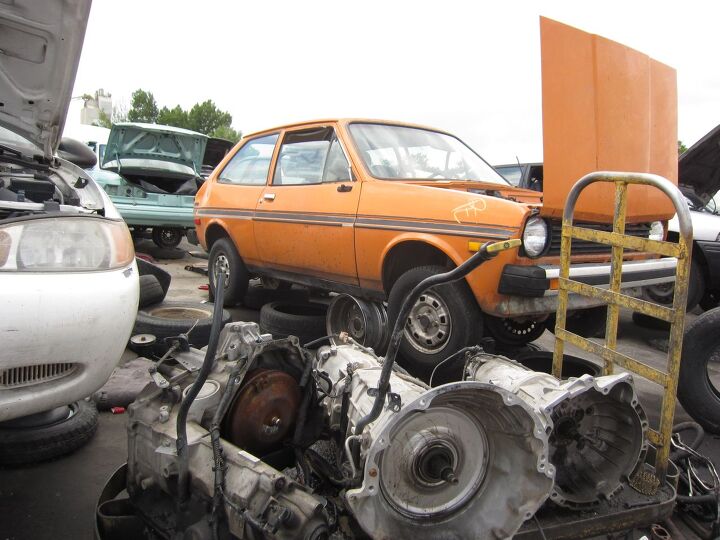
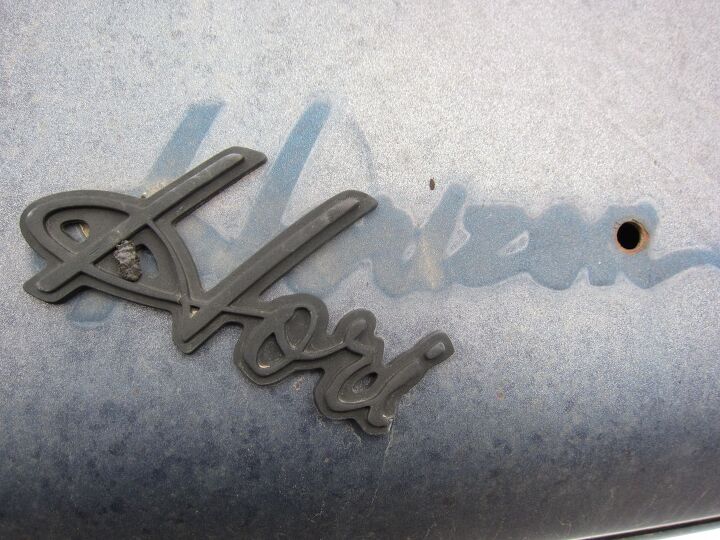

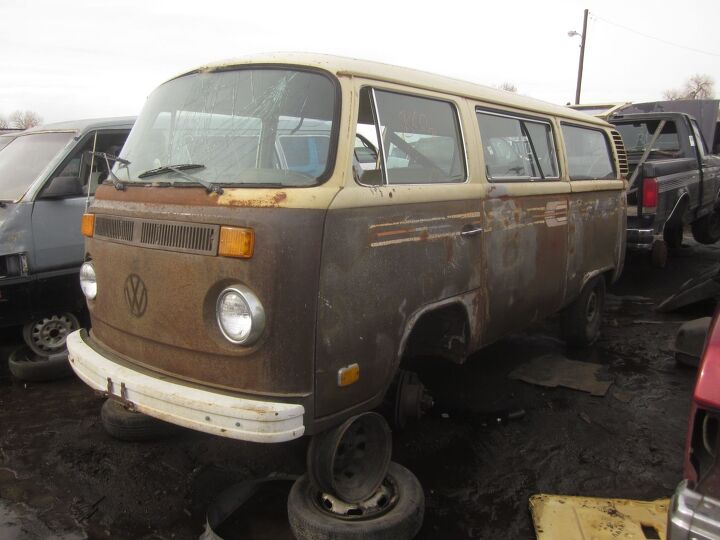

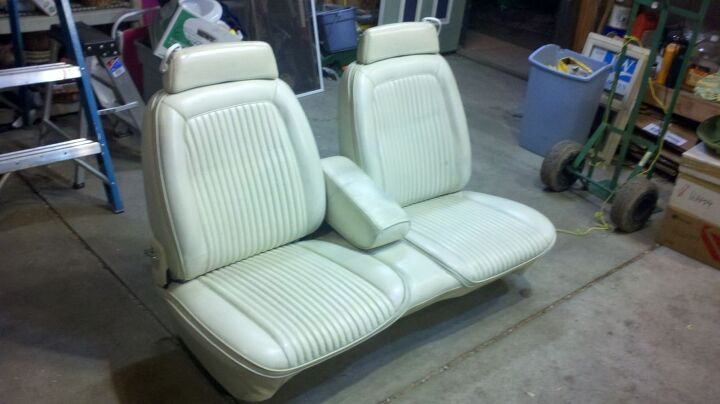


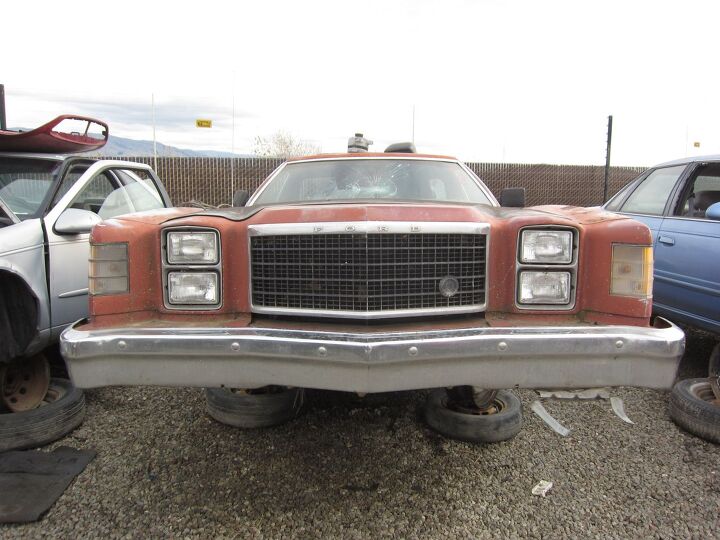
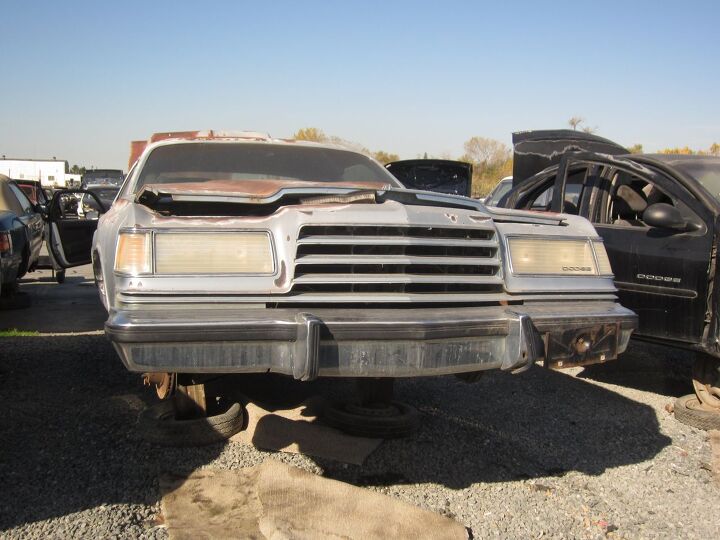

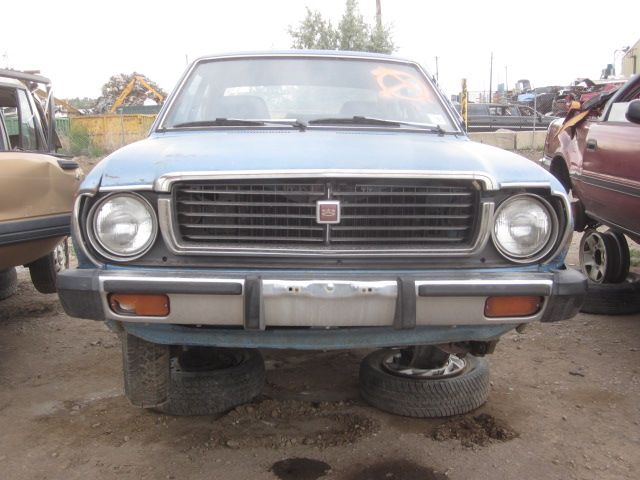














Recent Comments